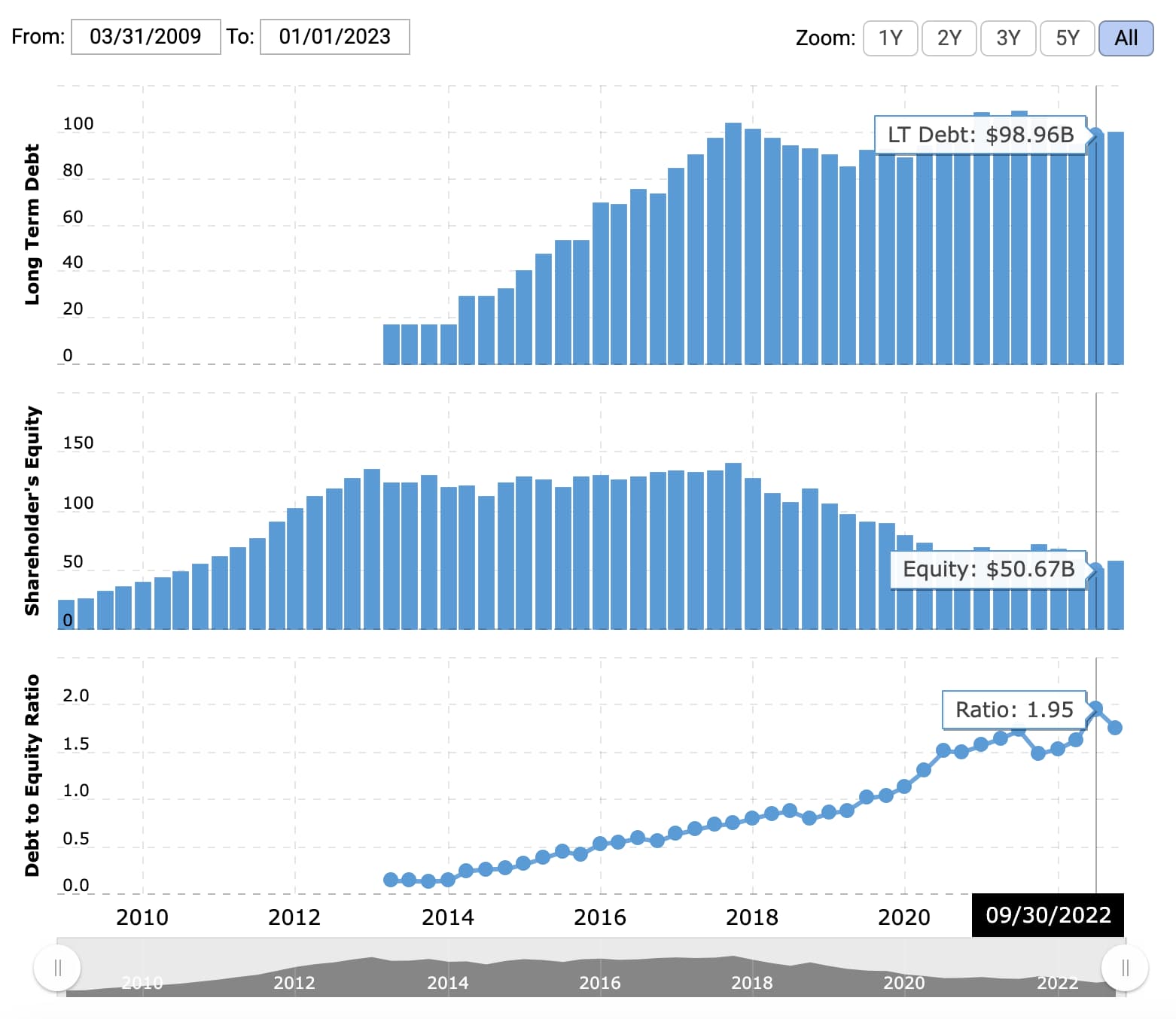
As discussed earlier, a lower debt ratio signifies that the business is more financially solid and lowers the chance of insolvency. With this information, investors can leverage historical data to make more informed investment decisions on where they think the company’s financial health may go. The difference, however, is that whereas debt to asset ratio compares a company’s debt to its total assets, debt to equity ratio compares a company’s liabilities to equity (assets less liabilities). There are several metrics that are used to gauge the financial health of a company, how the company finances its business operations and assets, as well as its level of exposure to risk. Because debt is inherently risky, lenders and investors tend to favor businesses with lower D/E ratios. For shareholders, it means a decreased probability of bankruptcy in the event of an economic downturn.
Debt to Equity (D/E) Ratio Calculator

Finally, the debt-to-equity ratio does not take into account when a debt is due. A debt due in the near term could have an outsized effect on the debt-to-equity ratio. So in the case of deciding whether to invest in IPO stock, it’s important for investors to consider debt when deciding whether they want to buy IPO stock. Depending on the industry they were in and the D/E ratio of competitors, this may or may not be a significant difference, but it’s an important perspective to keep in mind. In addition, there are many other ways to assess a company’s fundamentals and performance — by using fundamental analysis and technical indicators. In order to calculate the debt-to-equity ratio, you need to understand both components.
Related Terms
The quick ratio is also a more conservative estimate of how liquid a company is and is considered to be a true indicator of short-term cash capabilities. Generally, a D/E ratio of more than 1.0 suggests that a company has more debt than assets, while a D/E ratio of less than 1.0 means that a company has more assets than debt. The principal payment and interest expense are also fixed and known, supposing that the loan is paid back at a consistent rate. It enables accurate forecasting, which allows easier budgeting and financial planning. On the other hand, when a company sells equity, it gives up a portion of its ownership stake in the business. The investor will then participate in the company’s profits (or losses) and will expect to receive a return on their investment for as long as they hold the stock.
Calculation of Debt To Equity Ratio: Example 2
These balance sheet categories may include items that would not normally be considered debt or equity in the traditional sense of a loan or an asset. Because the ratio can be distorted by retained earnings or losses, intangible assets, and pension plan adjustments, further research is usually needed to understand to what extent a company relies on debt. The higher the debt ratio, the more leveraged a company is, implying greater financial risk.
- Higher D/E ratios can also tend to predominate in other capital-intensive sectors heavily reliant on debt financing, such as airlines and industrials.
- In the consumer lending and mortgage business, two common debt ratios used to assess a borrower’s ability to repay a loan or mortgage are the gross debt service ratio and the total debt service ratio.
- Not only that, companies with a high debt-to-equity ratio may have a hard time working with other lenders, partners, or even suppliers, who may be afraid they won’t be paid back.
- The D/E ratio also gives analysts and investors an idea of how much risk a company is taking on by using debt to finance its operations and growth.
- The optimal debt-to-equity ratio will tend to vary widely by industry, but the general consensus is that it should not be above a level of 2.0.
- Finally, if we assume that the company will not default over the next year, then debt due sooner shouldn’t be a concern.
For a mature company, a high D/E ratio can be a sign of trouble that the firm will not be able to service its debts and can eventually lead to a credit event such as default. In all cases, D/E ratios should be considered relative to a company’s industry and growth stage. The D/E ratio can be classified as a leverage ratio (or gearing ratio) that shows the relative amount of debt a company has. As such, it is also a type of solvency ratio, which estimates how well a company can service its long-term debts and other obligations. This is in contrast to a liquidity ratio, which considers the ability to meet short-term obligations.
How do companies improve their debt-to-equity ratio?
The reason for this is there are still loans that need to be paid while also not having enough to meet its obligations. Another popular iteration of the ratio is the long-term-debt-to-equity ratio which uses only long-term debt in the numerator instead of total debt or total liabilities. This second classification of short-term debt is carved out of long-term debt and is reclassified as a current liability called current portion of long-term debt (or a similar name). The remaining long-term debt is used in the numerator of the long-term-debt-to-equity ratio.
While taking on debt can lead to higher returns in the short term, it also increases the company’s financial risk. This is because the company must pay back the debt regardless of its financial performance. If the company fails to generate enough revenue to cover its debt obligations, it could calculating profits and losses of your currency trades lead to financial distress or even bankruptcy. The D/E ratio is a financial metric that measures the proportion of a company’s debt relative to its shareholder equity. The ratio offers insights into the company’s debt level, indicating whether it uses more debt or equity to run its operations.
Trends in debt-to-equity ratios are monitored and identified by companies as part of their internal financial reporting and analysis. The debt-to-equity ratio (D/E) is a financial leverage ratio that can be helpful when attempting to understand a company’s economic health and if an investment is worthwhile or not. It is considered to be a gearing ratio that compares the owner’s equity or capital to debt, or funds borrowed by the company.
Considering the company’s context and specific circumstances when interpreting this ratio is essential, which brings us to the next question. Some analysts like to use a modified D/E ratio to calculate the figure using only long-term debt. If a D/E ratio becomes negative, a company may have no choice but to file for bankruptcy. If the D/E ratio of a company is negative, it means the liabilities are greater than the assets.











